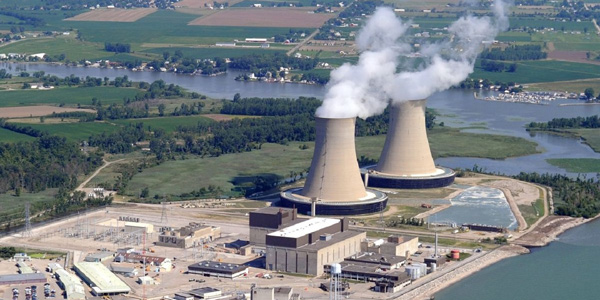By Amanda Durish Cook
CARMEL, Ind. — MISO’s grid will be only minimally susceptible to the impacts of possible water scarcity in the future, in part because of increased adoption of renewables, new RTO models show.
The RTO will only have a “relatively modest” need for incremental new generation to meet demand under water scarcity, Senior Adviser Eli Massey told stakeholders at a Planning Advisory Committee meeting Wednesday.
“The results of this first round of modeling suggest that MISO isn’t susceptible to either a short-term or long-term water scarcity scenario,” Massey said.
The modeling relied on data from Sandia National Laboratory to estimate the “water intensity factor” for MISO generation, which represents the relationship between the amount of cooling water and fuel needed to produce 1 MWh of energy. That data point was cross-referenced with estimates for the volume of water available for generation under short- and long-term scarcity conditions.
Most water scarcity concerns can be mitigated by economically redispatching MISO’s resource portfolio “around low to moderate water scarcity.” He also said the continued evolution of the resource portfolio toward renewables “is moving MISO in a direction that makes it less susceptible to water scarcity in the future.”
“Wind doesn’t need water,” he said.
MISO doesn’t collect cooling water use statistics from its members, and Sandia could only provide usage stats for about half the generation in its footprint, Massey said. He said MISO consulted with Sandia and the National Renewable Energy Laboratory on their methodology to fill in missing estimates.
MISO modeled both a six-year drought and recovery, and a 15-year water scarcity scenario in which water available for generation is limited by varying degrees. Scientists have repeatedly predicted that climate change, bringing long dry spells and more severe flooding, will intensify water shortages in some geographic areas. RTO staff did not mention climate change during the presentation.
Massey said energy served by MISO’s thermal resources is disrupted only in the most extreme water shortage scenarios.
“MISO is always looking at environmental issues or operational risks to reliability,” Massey explained to stakeholders. “We always felt like we thought we were OK, but we never quantified it.”
The effort is MISO’s first attempt to understand the potential impacts of water scarcity, Massey said, adding that the RTO will perform more analyses, possibly on a seasonal or subregional level, to understand the impacts of water constraints in the footprint.
“This isn’t the only avenue we’re exploring. MISO is partnering with NREL and other labs to understand water risk,” Massey said.
He also said MISO may explore requesting more accurate water use statistics from its thermal generation operators. He asked stakeholders to communicate their interest in having the RTO analyze more detailed data.




